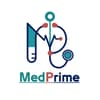Podcast
Questions and Answers
Serotonin has a vasodilatory effect on what part of the body?
Serotonin has a vasodilatory effect on what part of the body?
skeletal muscle
The leading cause of liver failure in the US is what?
The leading cause of liver failure in the US is what?
alcohol abuse
Drugs that bind to the proton pump of gastric parietal cells and inhibit hydrogen ion secretion include:
Drugs that bind to the proton pump of gastric parietal cells and inhibit hydrogen ion secretion include:
omeprazole (prilosec)
Drugs that inhibit coagulation through direct inhibition of thrombin include:
Drugs that inhibit coagulation through direct inhibition of thrombin include:
What anticoagulant drug causes less platelet inhibition than heparin?
What anticoagulant drug causes less platelet inhibition than heparin?
Termination of the effects of succinylcholine at the neuromuscular junction occurs as a result of what?
Termination of the effects of succinylcholine at the neuromuscular junction occurs as a result of what?
An occurrence malpractice insurance policy offers what?
An occurrence malpractice insurance policy offers what?
Droperidol has what type of activity on the rhythm and should not be given to what type of patient?
Droperidol has what type of activity on the rhythm and should not be given to what type of patient?
The phrenic nerve arises from which spinal nerve roots?
The phrenic nerve arises from which spinal nerve roots?
What are factors that are associated with acute lung injury after thoracic surgery?
What are factors that are associated with acute lung injury after thoracic surgery?
What is the primary mechanism of intraoperative heat loss?
What is the primary mechanism of intraoperative heat loss?
What is sinus arrhythmia?
What is sinus arrhythmia?
The block associated with the highest blood level of local anesthetic per volume injected is the:
The block associated with the highest blood level of local anesthetic per volume injected is the:
What is the incidence of VAE?
What is the incidence of VAE?
The duration of action of atracurium may be significantly prolonged by:
The duration of action of atracurium may be significantly prolonged by:
Peak serum levels of local anesthetic from tumescent liposuction are most commonly seen in what time frame?
Peak serum levels of local anesthetic from tumescent liposuction are most commonly seen in what time frame?
Opioids currently NOT approved for epidural or intrathecal use include:
Opioids currently NOT approved for epidural or intrathecal use include:
Anesthetic management shown to reduce the incidence of postoperative apnea includes:
Anesthetic management shown to reduce the incidence of postoperative apnea includes:
Reduction of heart rate seen with the administration of opiates is mediated through which receptors?
Reduction of heart rate seen with the administration of opiates is mediated through which receptors?
List the voltages where the following is felt:
List the voltages where the following is felt:
Mortality after liposuction procedures most commonly is the result of:
Mortality after liposuction procedures most commonly is the result of:
Pulmonary effects of α1-adrenergic stimulation include:
Pulmonary effects of α1-adrenergic stimulation include:
The area of myocardium most vulnerable to ischemia is the:
The area of myocardium most vulnerable to ischemia is the:
An anxiolytic herbal medication associated with a decrease in the requirement of inhaled anesthetic agent (MAC) is:
An anxiolytic herbal medication associated with a decrease in the requirement of inhaled anesthetic agent (MAC) is:
Flashcards are hidden until you start studying
Study Notes
Pharmacology and Physiology
- Serotonin: Induces vasodilation primarily in skeletal muscle.
- Liver Failure: Leading cause in the US is attributable to alcohol abuse.
- Proton Pump Inhibitors: Omeprazole (Prilosec) inhibits hydrogen ion secretion by binding to the proton pump in gastric parietal cells.
- Direct Thrombin Inhibitors: Bivalirudin is notable for inhibiting coagulation by directly targeting thrombin.
Anesthesia and Surgery
- Enoxaparin: A low molecular weight heparin that causes less platelet inhibition than heparin and is more effective against factor Xa.
- Succinylcholine: Its effects are terminated by diffusion away from receptors and subsequent hydrolysis in plasma by pseudocholinesterase.
- Malpractice Insurance: Occurrence policies cover incidents during the policy term regardless of claim filing date, unlike claims-made policies.
- Droperidol: Exhibits mild alpha-blocking and antiarrhythmic properties but can prolong the QT interval; not suitable for patients with QT > 440 ms or pheochromocytoma.
Neurology and Respiratory System
- Phrenic Nerve: Powered by spinal roots C3 - C5; unilateral palsy leads to moderate reduction in pulmonary function.
- Acute Lung Injury: Associated with excessive intravascular volume, high ventilation pressures, right pneumonectomy, and preoperative alcohol use.
- Intraoperative Heat Loss: Radiation accounts for approximately 40%, followed by convection which accounts for 32%.
Cardiology and Monitoring
- Sinus Arrhythmia: Defined as heart rate variation with ventilation; considered a normal rhythm due to changes in vagal tone.
- Local Anesthetic Blood Levels: Intercostal block results in the highest blood levels of local anesthetic per volume injected.
- Venous Air Embolism: Incidence is heightened during sitting craniotomies, ranging from 20 - 40%.
- Atracurium Duration: Prolonged by hypothermia or acidosis due to its unique metabolism via Hoffman elimination.
Pediatrics and Risk Management
- Tumescent Liposuction: Peak serum lidocaine levels occur 12 - 14 hours post-injection; involves large volumes of tumescent solution.
- Caffeine Administration: Effective in reducing postoperative apnea in at-risk infants; recommended loading dose is 10 mg/kg.
- Opiates and Heart Rate: Reduction in heart rate from opiates mediated through mu receptors.
Electrical Safety
- Electrical Voltage Risks:
- 1 mA: Perception threshold
- 15 mA: Let-go current
- 100 µA: Microshock risk
- 200 mA: Potential for ventricular fibrillation
Surgical Complications
- Liposuction Mortality: Most commonly caused by pulmonary embolism, with a mortality rate of approximately 0.02%.
- α1-Adrenergic Stimulation: Results in decreased bronchial secretions; conversely, β2 stimulation promotes bronchodilation.
Cardiac Vulnerability
- Ischemia: The left ventricular subendocardium is the most susceptible area due to restricted perfusion and greater systolic shortening.
Herbal Medicine
- Valerian: An anxiolytic herbal remedy that decreases the requirement for inhaled anesthetic agents (MAC) by exerting a GABA-mediated hypnotic effect.
Studying That Suits You
Use AI to generate personalized quizzes and flashcards to suit your learning preferences.





